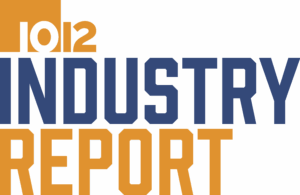Position: Vice president and general manager of the Lake Charles Manufacturing Complex, the sixth largest refining facility in the U.S.
Company: CITGO
What They Do: Refine, transport and market transportation fuels, lubricants, petrochemicals and other industrial products.
Career: Dunn is an LSU graduate and has been with CITGO for 30 years, starting out in capital projects and rotating through most parts of the complex before being named vice president in January of 2018.
THE CHALLENGE
During his first year as refinery plant manager, Jerry Dunn and his team encountered several unplanned unit shutdowns that put their reliability into question.
These types of issues were uncharacteristic for the Lake Charles Refinery, which historically has high mechanical availability. The unit shutdowns negatively affected key performance metrics and also pulled valuable resources from planned work to address the unplanned unit shutdowns.
The normal practice at the Lake Charles Refinery is to perform a root cause analysis for all equipment failures. Dunn says this was done for the affected units, but the approach at that time was reactive in nature and focused on improving reliability after the equipment failed. “We saw an opportunity to improve our practices and to create a more proactive approach,” he says. “Instead of maintaining the status quo, we took action to improve unit reliability and ultimately improve safety, environmental and financial performance.”
THE RESOLUTION
The first step taken was to form reliability teams to address the affected units. These teams were cross-functional and comprised of different engineering disciplines and operations and maintenance personnel. “Getting the right team members assigned was critical since all the various disciplines have unique knowledge and skill sets,” Dunn says. In some cases, third-party consultants were also used. The teams evaluated the reliability histories and used tools such as pareto analyses [the principle that 80% of problems are due to 20% of causes] to help identify the problematic issues with each of the units. Dunn says the pareto results were key—especially for one particular unit where the results indicated most of the issues were associated with instrumentation.
Other proactive approaches included identifying single points of failure, bad process control strategies, lack of condition monitoring tools and out of date rotating equipment components. The teams then generated action items to address the reliability issues and assigned them to various departments in the refinery. Progress on the action items were reviewed with management on a monthly basis until final implementation.
THE TAKEAWAY
Dunn says the typical Lake Charles refinery approach to reliability was making incremental improvements, normally after a failure occurred. “Our new approach emphasizes proactivity by reviewing our units and processes in a more holistic manner,” he explains. “The actions taken to date have significantly improved the units’ reliability, and we look forward to implementing the practices across other refinery operations as well.”









